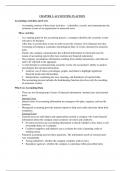Samenvatting
Summary notes for Financial Accounting with International Financial Reporting Standards
- Vak
- EBC2176
- Instelling
- Maastricht University (UM)
Summary notes for Financial Accounting with International Financial Reporting Standards
[Meer zien]





